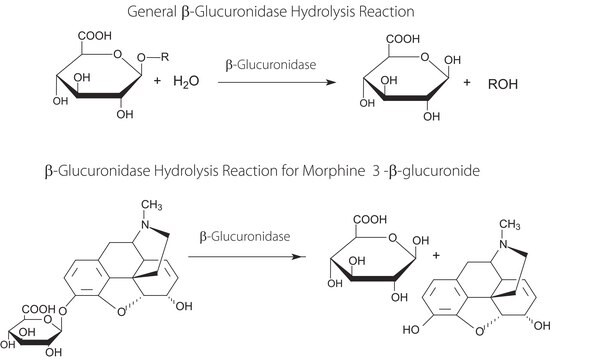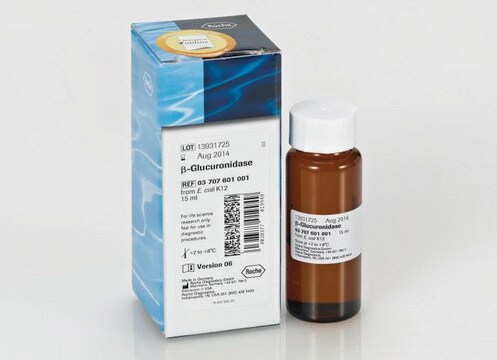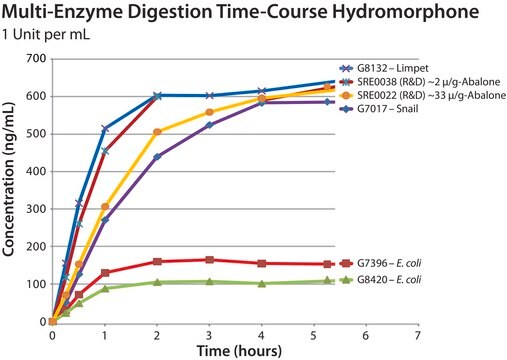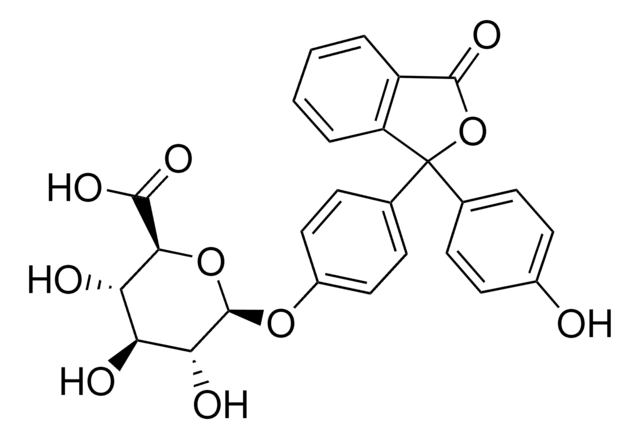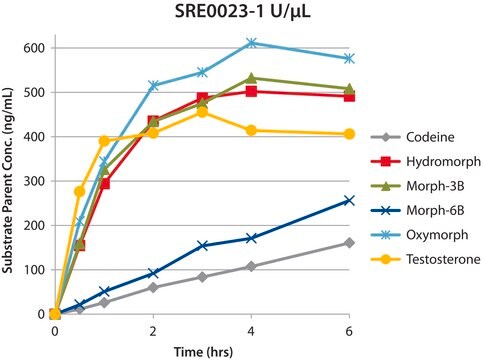G0376
β-Glucuronidase from bovine liver
Type B-3, ≥2,000,000 units/g solid
Synonym(s):
β-D-Glucuronide glucuronosohydrolase
About This Item
Recommended Products
biological source
bovine liver
Quality Level
type
Type B-3
form
solid
specific activity
≥2,000,000 units/g solid
storage temp.
−20°C
Looking for similar products? Visit Product Comparison Guide
Related Categories
1 of 4
This Item | G0251 | G8132 | G0751 |
|---|---|---|---|
| biological source bovine liver | biological source - | biological source limpet (Patella vulgata) | biological source - |
| form solid | form solid | form lyophilized powder | form partially purified powder |
| storage temp. −20°C | storage temp. −20°C | storage temp. −20°C | storage temp. −20°C |
| Quality Level 200 | Quality Level 200 | Quality Level 300 | Quality Level 200 |
| type Type B-3 | type Type B-1 | type Type L-II | type Type H-1 |
Application
Biochem/physiol Actions
Unit Definition
Signal Word
Danger
Hazard Statements
Precautionary Statements
Hazard Classifications
Resp. Sens. 1 - Skin Sens. 1
Storage Class Code
11 - Combustible Solids
WGK
WGK 3
Flash Point(F)
Not applicable
Flash Point(C)
Not applicable
Personal Protective Equipment
Choose from one of the most recent versions:
Already Own This Product?
Find documentation for the products that you have recently purchased in the Document Library.
Customers Also Viewed
Protocols
Enzymatic Assay of ß-Glucuronidase (EC 3.2.1.31) from Helix Pomatia and Bovine Liver. This procedure applies to all b-Glucuronidase products that are derived from Helix Pomatia and Bovine Liver. It is the responsibility of trained Analytical Services laboratory personnel to follow this procedure as written.
To optimize hydrolysis using β-glucuronidase, factors such as incubation time, temperature, hydrolysis pH, enzyme source, and enzyme concentration must be evaluated for each glucuronide metabolite to be analyzed.
Our team of scientists has experience in all areas of research including Life Science, Material Science, Chemical Synthesis, Chromatography, Analytical and many others.
Contact Technical Service